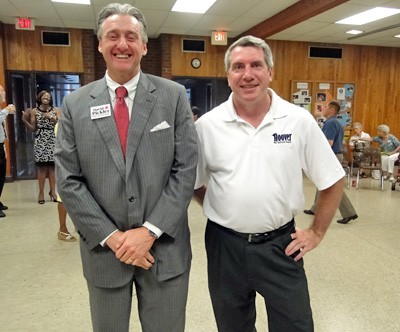When it comes to a concentration of historic structures, Cordova is no Midtown. But that doesn’t mean the suburb doesn’t have old buildings of value.
At a meeting last week at the Bert Ferguson Community Center in Cordova about Memphis’ Preservation Plan, Graydon Swisher of the West Tennessee Historical Society listed several structures still standing in old town Cordova, including the train depot on Macon Road.
As Swisher named historic Cordova locations, Emily Trenholm of Livable Memphis marked the spots on a large wall map. The addresses will likely be added to a new online database of more than 700 historic and culturally significant structures throughout the city.
The database is part of the updated Memphis Preservation Plan to protect properties already on the National Historic Register, properties that are 40 years old and eligible for the register in 10 years, and sites that may not qualify for the register but have significance to the community.
The existing preservation plan was drafted in 1997, and more than 40 volunteers are doing the legwork on the update, which includes hosting a series of 16 public meetings to decide which structures should be added to the database.
“The need for the database is really important. We wanted all the city agencies to see what is considered historic to help with planning,” said Nancy Jane Baker, manager of the Memphis Landmarks Commission. “We don’t want to run into this last-minute ‘you can’t tear this down because it’s historic’ thing.”
On Union in Midtown, some of the avenue’s remaining historic structures — the Union Avenue United Methodist Church, the Nineteenth Century Club, and the Scottish Rite building — have become endangered. Though the database wouldn’t necessarily save those buildings, it might raise awareness of their importance.
“This is more of an informational tool than anything else,” Baker said. “With the Scottish Rite building, the database would help the University of Tennessee system to know that this is an important building to the community.”
Besides basic address information, the public database will also include information on whether a structure is threatened by neglect or redevelopment.
Cathy Marcinko, the Memphis Preservation Plan facilitator, said the database should be ready by the end of the year.
For more information on the remaining public meetings, call Nancy Jane Baker at 576-7170.
 JB
JB